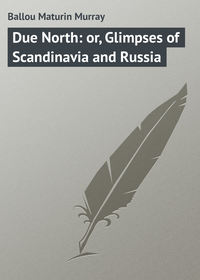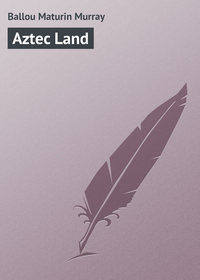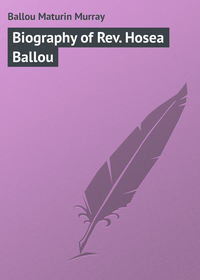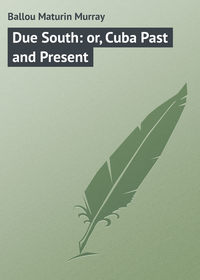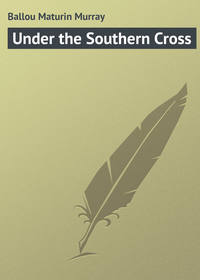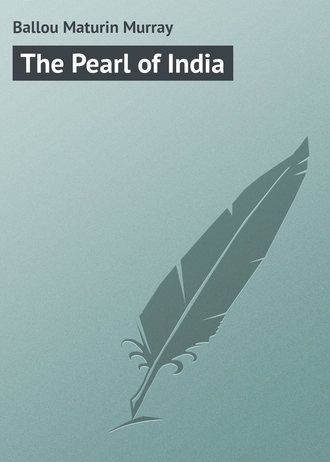
The Pearl of India
How well our first trip inland in Ceylon is remembered. While watching the novel and intensely interesting sights, the air was heavy with aromatic fragrance, and sweet with the odor of lilies, while a feeling of quiet content stole over the senses, as in a half-waking dream from which one does not desire to be aroused. Was the brain yielding to the subtle breath of those gorgeous lotus flowers, which opened wide their delicate pink petals to the sunshine? This queen of the lily tribe, the lotus, is here seen in two varieties, the pink and the white. They resemble very closely the common pond-lily of our own climate, but are thrice their size. The seeds are a mild narcotic, and are sometimes eaten by the natives to produce that effect. It is said that birds of the wading family sometimes partake of them until they become stupefied. The seed is about the size of a hazel-nut, and leaves a bitter, puckering taste in the mouth.
The white-ant hills which rise to such proportions here and there in the wooded districts remind us that these minute but marvelously industrious creatures are one of the great pests of equatorial regions, and that they are especially destructive in this island. Attracted by the very dry condition of the wood, they bore holes in the timbers which form the frames of the better class of dwellings, and therein lay their eggs. As soon as the young ants are hatched, they begin to devour the wood, and continue to do so until it falls to pieces. They operate on the inside, avoiding the outer part, proving to be the most stealthy of all aggressive invaders, and their presence is often unsuspected until the mischief is done. The palmyra palm and the ebony-tree furnish the only timber which resists the serious ravages of these white ants. The author was shown a bungalow near Kandy, which was in ruins, where the occupants not long before were one day surprised by the roof tumbling in upon them while they were seated at the dinner-table. The supporting timbers were no longer able to bear their own weight, much less to hold the heavy thatched roof in place, after having been reduced by the ants to a mere shell. One would think that where an abundance of fresh, green vegetation and ripe fruit are to be had, dry timber could have few attractions as insect food.
One of the species of ants common in Ceylon has been made the subject of careful investigation by competent naturalists, and with extremely interesting results. The conclusions arrived at serve to corroborate previously formed ideas, that of all small creatures the ant is endowed with the most intelligence. Among other singular facts which have been discovered, it is now known that when a conflict occurs between rival tribes of ants, something like a regular military system is observed by them. They march to the conflict in strict order, divided into separate columns, which are evidently under command of different leaders, while the advance is so correctly timed that the attack upon the enemy is simultaneous. This requires mental calculation; instinct does not suffice to fix such matters. During the fight, the ants carry off their dead and wounded to a place of safety in the rear. A large detail, whose members take no part in the actual conflict, work like an ambulance corps attached to a well-organized army. If we were treating the subject in detail, many other interesting facts might be given, showing the remarkable organization which exists among them, and the sagacity of these intelligent insects.
On the island of Mauritius, in the Indian Ocean, the inhabitants protect themselves against the ravages of the white ants, which if permitted would commit similar depredations upon their dwellings to that already spoken of, by pitting a destructive enemy against them. When it is found that a colony of these termites have invaded a dwelling, the inhabitant knows that he must act promptly, as these creatures have big heads and strong jaws, and they destroy rapidly. He pours some molasses on the ground near by the path by which the white ants move to and fro between their home and the house. The smell of the treacle is sure to attract a bevy of black ants, which species is very fond of sweets. These are the natural enemies of the white ants. They notice the latter passing regularly back and forth, and govern themselves accordingly. In a few hours, a whole army of black ants approaches, marching in a column two yards long. They enter the infected house in large numbers, leaving a reserve force behind, and promptly destroy every white ant in the place. Finally the army marches out, each of the black ants carrying away a dead white one, which, cannibal-like, they devour!
But we are still on the way by rail to Kandy, and not writing a volume on natural history, though in making these notes and with the objects absolutely before one's eyes, the mind – and the pen as well – is apt to follow the natural suggestions of the subject, even at the risk of seeming to diverge from the purpose in hand. The patient reader thus often becomes possessed of facts, the communication of which was quite unpremeditated by the author. Let us take heed, however, not to make such detail wearisome.
On remarking to an intelligent resident of the island, who was a fellow passenger, that no wild animals were to be seen upon the route, he replied that if we were to leave the more thickly settled district and strike into the forest, abundant tracks would be met with of bears, leopards, and elephants. The latter, especially, make broad paths through the jungle by their heavy tread and shambling gait, leveling the undergrowth right and left as effectually as could be done by an army of bushwhacking road-makers. If a small tree impedes an elephant's progress, he puts his broad forehead against the stem, bends it so as to place his foot upon the horizontal trunk, and thus snaps it short off. If it does not yield readily, he winds his trunk firmly about it and pulls it up by the roots, as a dentist extracts a rebellious tooth. As a rule, small trees go down before a fleeing elephant like grass. Buffaloes are found in both the wild and domesticated condition all over the island, but they abound only in their wild state in the northern sections. The untamed buffalo is a dangerous antagonist when assaulted and fairly driven to bay, and many an English sportsman has been killed by them in Ceylon. The bulls are particularly savage and pugnacious, giving battle upon the slightest provocation.
At a point where the cars were stopped for a few moments to obtain a supply of water for the engine, a female monkey was seen among the trees, the mother of twins, holding the little things in her arms and nursing them in a manner so human as to form a most ludicrous picture. Presently, leaving her little ones in a safe place, she came down to the cars, and was regaled from our lunch basket with what to her must have been rare tidbits, supplied from the cuisine of the Grand Hotel at Colombo. As a rule, the monkey tribe avoid Europeans or white men, suspecting treachery, while they care very little for the native people, who rarely interfere with them. The affection of the mother monkey for its young is something very touching. If one of its little progeny dies, the mother still clings to it, sometimes for several days, carrying it about in her arms, until finally some instinct causes her to lay it away, covered with leaves and the tender young branches of the bamboo. Europeans have a cruel way of obtaining young monkeys to take away from the island. It is accomplished by shooting the mother, after which the bewildered little one is easily secured. One of these small monkey orphans was brought on board the steamship in which we left Ceylon, by its cruel captor. It was touching to see how the diminutive creature had transferred its trust and affection from its natural guardian to its present owner, to whom it clung incessantly. Poor little fellow! it was well that it did not know its new protector to be the sole cause of all its troubles. It proved to be a bad sailor, and was so seasick that it soon died, but it clung to its adopted friend to the last moment, who was, we are glad to say, exceedingly kind to the little waif.
After passing through the low country on the way to Kandy, we began gradually to climb an up-grade. This was at Rambukana, about fifty miles from Colombo, two powerful engines being now required to move even our short train, made up of four cars. The road winds zigzag fashion about the hills, in startling proximity to the deep, threatening abyss, while the ever-changing scenery of the Kaduganawa Pass becomes far-reaching and grand, varied by precipitous declivities, deep green gulches, and falling waters. The shelving rocks are here festooned with climbing plants, daintily enriched by blossoms of vivid hues, and flowering creepers. As one can easily believe, this was an expensive road to build, costing in many parts over a hundred and fifty thousand dollars per mile, but it is most thoroughly constructed on a gauge of five feet and six inches. The gradant in some places is one foot in forty-five. Near the highest part of the line stands "Sensation Rock," from which a grand and startling view is enjoyed, recalling a similar experience on the author's part at "Inspiration Point," overlooking the never-to-be-forgotten Yosemite Valley in California. This Ceylon rock has an evil history, it being, according to tradition, the spot from which the ancient kings of Kandy ruthlessly hurled their prisoners of war to destruction. This railway is a great success pecuniarily and otherwise. So well has it been managed that in the twenty-two years which have transpired since its completion, but one accident has occurred of any special moment, and no European or American has ever lost life or limb by mishap while traveling upon the road. It is to be feared that we cannot cite a similar instance of any railway in this country.
At last, after a hearty enjoyment of the bold and beautiful scenery for two hours and more, winding snakelike about the steep acclivities, and diving into and out of dark, gloomy tunnels, we landed in the old and picturesque capital of the central province. It is not exactly a city built upon a hill, but it is a city built among the hills.
The region in this line of latitude between the eastern and western coast of the island, particularly in the central province, is one of much grandeur, a country of Alpine heights and deep green valleys. Here dark ravines and plunging waterfalls multiply themselves. Not small, spraylike bodies of water, like many in Switzerland, but fierce, restless bodies of foaming torrents, sweeping headlong over abrupt declivities three hundred feet in height. The system of mountains does not form a continuous range, but consists of a succession of plateaus and of detached mountains rising from elevated bases. Thus, Adam's Peak, were it to rise to its present height from a plain at about the level of the ocean, would be far more grand and impressive than it now is, with its direct upheaval beginning from so elevated a base. So in the instance of the two famous mountains which rise from the great Mexican plateau, – Mount Popocatepetl, and Mount Ixtaccihuatl, which lose seven thousand feet of the effect of their real height, because their base starts from a plain situated at that elevation above the sea.
CHAPTER XII
Historical Kandy. – Importance of Good Roads. – Native Population. – Temple of Buddha's Tooth. – The Old Palace. – Governor's House. – Great Resort of Pilgrims. – Interior of the Temple. – The Humbug of Relics. – Priests of the Yellow Robe. – A Sacred Bo-Tree. – Diabolical Services in the Ancient Temple. – Regular Heathen Powwow. – Singhalese Music. – Emulating Midnight Tomcats. – Chronic Beggary. – The Old Parisian Woman with Wooden Legs. – A Buddhist Rock-Temple.
Kandy is a place of more than ordinary interest in Ceylon, on account of its historical relations. It will be remembered that a native king reigned here as recently as 1814. The recklessness, cruelty, and grievous tyranny of this potentate hastened his downfall, causing his native subjects to join the English in effecting his overthrow. The government took forcible possession of the place in 1815, capturing the king and sending him to Bengal as a political prisoner, where he died seventeen years later. The systematic brutality of this ruler was exercised so lately that its detail is preserved, forming a horrible story of barbarous cruelty. One elephant was trained as an executioner, whose duty it was to tread to death any condemned political or other prisoner. Rich and poor, priest and soldier, are said to have rejoiced at the banishment of this tyrant.
When the Kandian kings died, their bodies were cremated with great ceremony. It was not the same here as it is and was in India proper, where all classes are cremated; only kings, nobles, and priests enjoyed the privilege in the island of Ceylon. Kandy is still the capital of the central province. All the efforts of the Portuguese and afterward of the Dutch to conquer this mountain region were unavailing, owing to its isolation and its inaccessibility. The town was situated in a valley, guarded by narrow mountain passes which a few determined men could effectually defend. The district was also girt about by tangled forests almost impassable except by birds, wild beasts, and reptiles, the latter being the chronic dread of the European invaders. Only foot or bridle paths existed between populous points along the coast in those days. There were no roads in any direction passable for wheeled vehicles during the possession of the island by the two nationalities spoken of.
The English, after conquering and fortifying the coast, promptly applied themselves to the opening of broad, well-engineered roads in all directions, and especially between Colombo and Kandy, so that bodies of infantry and artillery could quickly reach any desired point in efficient numbers. This changed the condition of affairs most essentially, enabling the new invaders to conquer and bring all parts of the island under military subjection. Since the capture of Kandy in 1815 there have been three rebellious uprisings of the natives, the last of which occurred in 1847, which the English officials stamped out with such rigor, not to say cruelty, that it has so far proved the last attempt of the sort. Lord Torrington, who was then governor of Ceylon, incurred the censure of the home government for the needless severity of the punishment inflicted upon the natives. The business of road-making between important points has been continued ever since, supplemented by many miles of railway, which has proved to be the most potent agent of progress which could be devised. Thus have been opened to free access rich agricultural and mineral districts, besides promoting intercourse between the natives of the island and the Europeans on the coast. Railways and good inland roads for wheeled vehicles are great promoters of true civilization and progress. Polygamy, which had so long defied the laws of these United States, was a doomed institution when the first iron rail reached the borders of Utah Territory.
The people of this ancient capital are no longer isolated; four hours' ride upon the rail takes them to Colombo.
The same class of natives are met with at Kandy as are seen on the coast, except that there are more shaven-headed priests in yellow robes, one end of which is thrown over the left shoulder, leaving the right arm and shoulder bare. The wearers are marked by a moody, unsatisfied expression. Aside from their office and connection with the temples, these men command no respect from the people, being generally illiterate and in no wise superior to the masses. They assume the appearance of mendicants in accordance with their religious profession, and are inveterate beggars, but are in fact, we were credibly informed, among the richest natives in Ceylon. They are supposed to live solely on charity, and receive no ostensible remuneration for their priestly services, but they are shrewdly hoarding money all the while like the veriest miser, while their social relations, like their Roman Catholic brethren, outrage unblushingly all priestly rules. There are fewer Parsees and Moormen in proportion to the number of inhabitants. These, being of the trading class, generally seek Colombo or Point de Galle, where they find congenial occupation in supplying strangers with sapphires, topazes, rubies, and precious stones, or oftener with imitations of these, in disposing of which they are notable experts. There is but one piece of advice to be given regarding these harpies, – avoid them altogether.
The principal object of interest in Kandy is the old palace and the far-famed ancient temple of Malagawa, where the precious tooth of Buddha is preserved, and yet it is not very ancient, as the word applies to temples and ruins generally in Ceylon. It was built in the fourteenth century, especially to form a shrine for this tooth, and it is held, mainly on this account, to be the most sacred Buddhist temple in existence. The palace, now partially improved for government purposes, was built just about three hundred years ago by the Portuguese prisoners captured by the Kandians, which accounts for certain European characteristics about the edifice. It was doubtless once an imposing structure, but of no architectural interest. It faces a broad, level area, where in olden times elephant fights used to take place for the entertainment of the king and his court, – a cruel sport, in which one of the combatants was sure to lose his life, and not infrequently both were fatally injured. The modern Spanish bull-fight is only a degree more cruel, and both exhibitions are equally indicative of the national character of the promoters.
The one residence worthy of mention in Kandy proper is the Pavilion or Governor's House, built by Sir E. Barnes. This is a very elegant modern structure, combining European architecture with tropical adaptations, and is surrounded by a broad colonnade. The house is finished externally in stucco, with a hard polish like white marble, which it much resembles. The neighboring grounds are very beautifully laid out, and are kept like an English park, the view from which is beyond description for its variety and beauty.
The Temple of the Tooth has no claim to architectural beauty. It belongs to no recognized order, and is an indescribable old shrine, low, black, and grimy, surmounted at its eastern extremity by a tower manifestly of European design, which is, doubtless, a comparatively modern addition. The whole looks more like a spacious stable than an oriental shrine. This temple has made Kandy the Mecca of both India and Ceylon, attracting great numbers of pilgrims annually. It is regarded with such universal reverence that the priests of Burmah and Siam send a personal envoy bearing gifts to it every year, besides furnishing a large sum annually as tribute money. A few years since, an earnest effort was made to gain possession of the alleged tooth, a special mission having been dispatched from Siam for the purpose. These agents came prepared to pay a quarter of a million dollars for the coveted prize; but the Kandian priests would not part with it at any price that could be named. The temple of Malagawa is a curious establishment, with its gardens, shrines, and fish ponds, the latter well-filled with plethoric turtles and fish of a "sacred" kind, which come eagerly to certain points at the call of the priests, to be fed by pious pilgrims.
The inner walls of the temple are decorated with designs that are anything but cheerful, consisting of paintings intended to depict the various sorts of hells which will be awarded to erring mortals for their special earthly sins. The place absolutely smells of brimstone. The interest of our little party centred most upon some old manuscript books written upon talipot palm leaves in the Pali, Sanskrit, and Singhalese languages. The pages were here and there illustrated with what appeared to be appropriate designs, very odd to be sure, but yet not without a certain crude artistic taste. The books were bound in silver open-work covers or frames.
The famous tooth which is made so much of in this mouldy old temple is far too large to have ever come from the mouth of a human being, and is probably that of some defunct elephant or crocodile. Indeed, the original article which it is supposed to represent is proved to have been destroyed centuries since, when by the fortune of war it fell into the hands of the unbelievers. The author did not see the tooth. It was described to him as being deposited in a small apartment upon a silver table beneath a bell-shaped cover, the latter heavy with precious gems. Here, lying within the leaves of a large golden lotus, is the resting-place of the much-venerated piece of ivory. The tooth, duly guarded and with great pomp, is carried about the town once a year, just as the Indian idol, Juggernaut, takes its annual airing from the lofty temple at Tanjore, drawn by hundreds of worshipers.
It is exhibited by the official priests, and only on special occasions, with tokens of profound reverence. It was shown to the Prince of Wales in 1875, and to his two sons in 1882. The author well remembers a personal experience in the crypt of a certain Roman Catholic Church in Italy, where he was being shown a collection of "sacred" relics, pieces of the "true cross," etc., together with a lot of "holy" vestments rendered heavy by pretended gems of great value wrought into the texture of the clothing.
"Do you," was asked of the attendant priest at the time, "who are so intelligent, believe in the genuineness of these pretended stones?"
"They have their use," was his evasive reply.
"You certainly know that these so-called emeralds, rubies, and sapphires, are of glass and worthless?" we continued.
The answer was a cool shrug of the shoulders and a hasty covering up of the garments. The author knew too much about gems to be easily deceived, and the priest had permitted him to scrutinize them more closely than was usual. The original gems, if real ones had ever been used, had been purloined by priestly connivance, and false stones supplied to fill their place.
A far more interesting and probably much more genuine relic than the tooth which is so reverently preserved in the Kandy temple is a rudely engraved metallic dish or "alms pot," which is said to have been the personal property of Buddha, – the receptacle for the coins contributed by the mass of the people in charity. The Singhalese priests of to-day carry a similar brass bowl for a like purpose, and are not at all backward in making their demands for contributions from strangers.
These Kandian priests of the yellow robe are low-bred and ignorant. We speak of them as a body. There are some brilliant exceptions, but as a rule they have few qualities calculated to command respect. Cleanliness with them is also one of the lost arts, notwithstanding the pretended multiplicity of their baths, while their ceaseless habit of chewing the repulsive betelnut and expectorating the red saliva in all directions is extremely disgusting, equaled only by the filthy habits of tobacco-chewers.
We have said that the mouldy old Buddhist Temple of the Tooth at Kandy was the most interesting and attractive object to all strangers, but there is also here a tree, if tradition is correct, so aged and sacred in the eyes of the people as to almost rival the temple in attractiveness. It is an ancient bo-tree, – the sacred Indian fig, – situated in the spacious grounds attached to the temple. It has widely extended, scraggy limbs, is high, irregular in form, and undoubtedly very old. It is as sincerely bowed down to by pilgrims from afar as is the altar in the temple. Its very leaves are treasured with devout care, and the pilgrim counts himself specially blessed who is able to bear one away to his distant home, as a charm against all earthly ills. No one will presume to pluck a leaf of this tree, much as they may crave its possession. The leaf must fall from the branches in its maturity, and of its own volition, in order to yield its maximum of blessings to the holder. Local authority declares the Kandy bo-tree to be the oldest one living. Its record, they say, has been kept since three hundred years before Christ, or say for two thousand two hundred years. As there is at least one other similar tree in Ceylon for which about the same degree of antiquity is claimed, it may reasonably be doubted if both stories are correct. The other tree is situated among the ruins of Anuradhapura, planted, as its record declares, two hundred and forty years before the Christian era. It is somewhat surprising how universally the extreme age which is claimed for this tree is credited even by the English residents of the island who are familiar with Buddhist chronicles. That both these trees are very old is plain enough, but when we designate time past by the thousands of years, one must be somewhat over-credulous to accord such great antiquity to either of them, or indeed to any object of a perishable nature. And yet there are trees belonging to the locust family, as the author can bear testimony, growing among the West India Islands, declared to be over three thousand years old. This is in part corroborated by well-known visible characteristics of the locust which are clearly defined, and many intelligent arborists credit their longevity. There are thousands of bo-trees planted all over India proper and Ceylon, in memory of Buddha, which are held of a sacred character, and no good Buddhist will cut one down. It will be remembered that Humboldt saw a cypress in Mexico, a league from the capital, in the Chapultepec grove, which he estimated to be six thousand years old. It does seem as though scientists were a somewhat credulous class.


